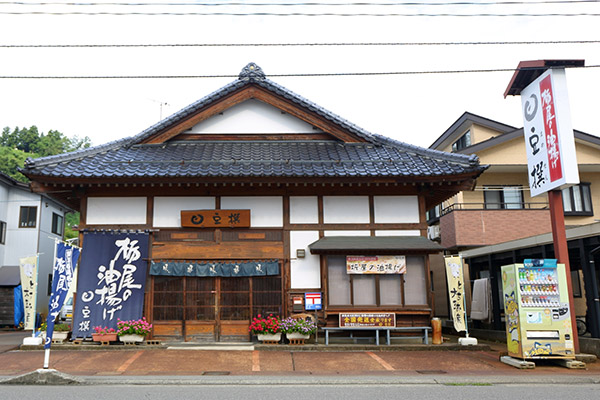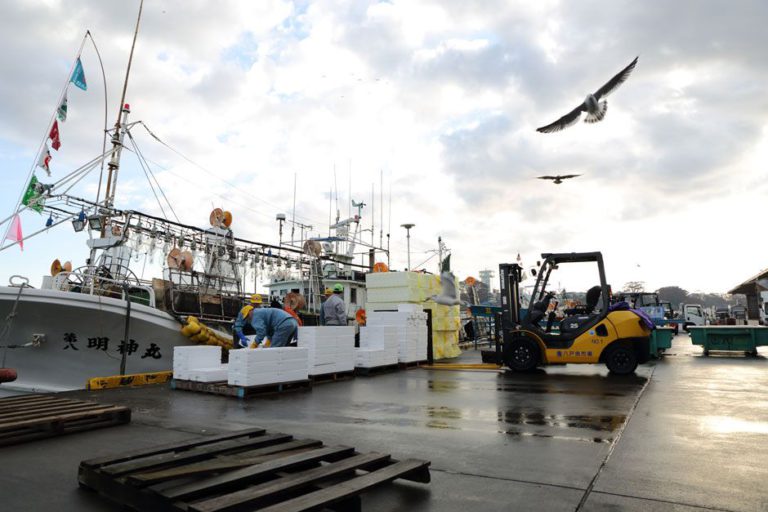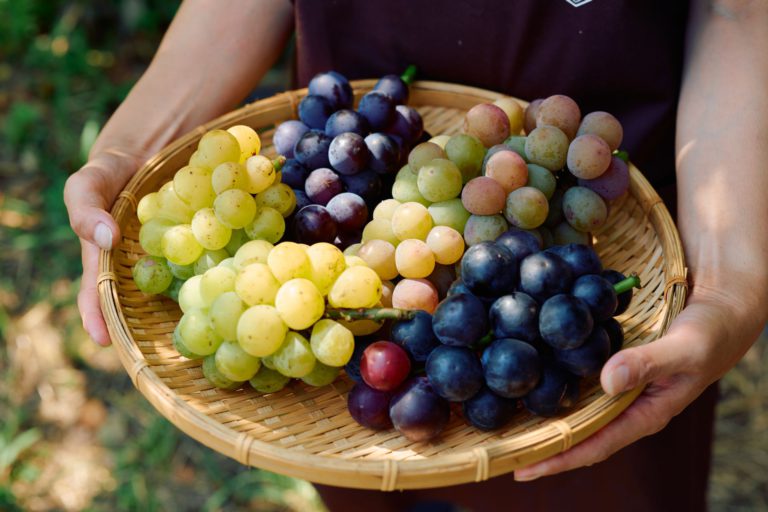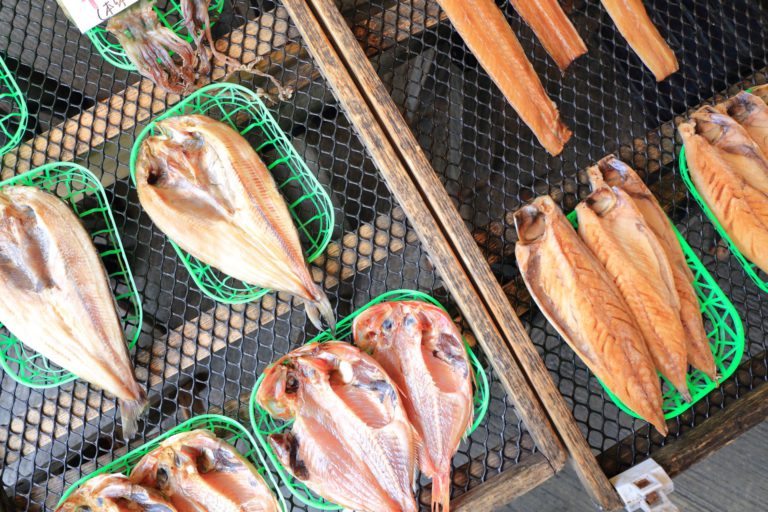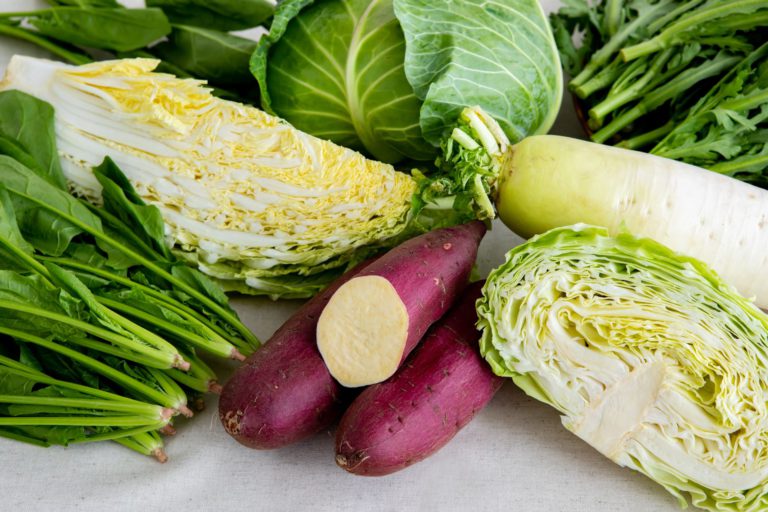Tochio’s Soul Food: Golden-brown, Thick Fried Tofu
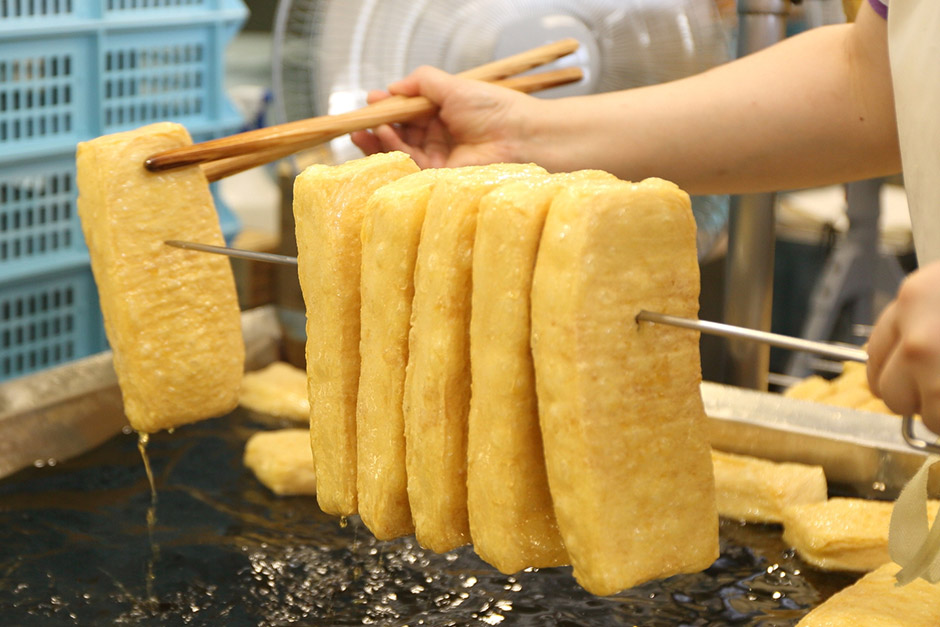
It is a treasured side dish of Japanese cuisine, used mainly in miso soup and stews. The deep-fried, thin, plate-shaped tofu is well known but Tochio’s deep-fried tofu is slightly different. It is plump, thick and tastes distinctly of soybeans, boasting such a strong presence that it can be a side dish on its own. To explore the roots of traditional deep-fried tofu, we visited Mamesen, a tofu shop in Tochio, Niigata Prefecture.
Deep-fried tofu is deeply rooted in the region
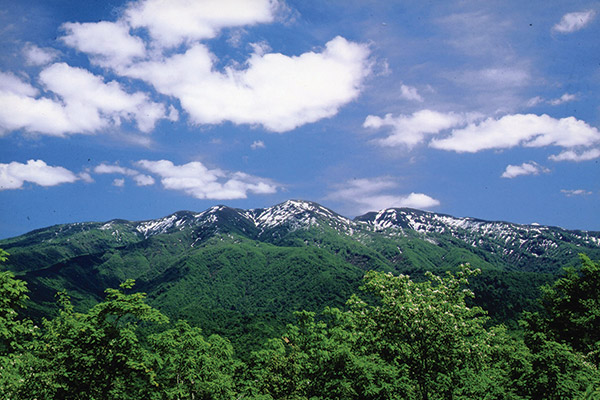
There are several theories as to how the culture of enjoying deep-fried tofu has developed in Tochio. One such theory is that Tochio is situated deep in the mountains, so it was hard for the locals to obtain fish and meat. This made deep-fried tofu, which could be made with locally grown soybeans, a treasured source of essential protein. Another speculates that Tochio was the place where the feudal lord Kenshin Uesugi commanded, and deep-fried tofu was created as a souvenir for visitors of the Akiba Shrine, to which Shingen made offerings and worshipped as a home of a God who prevented fire.
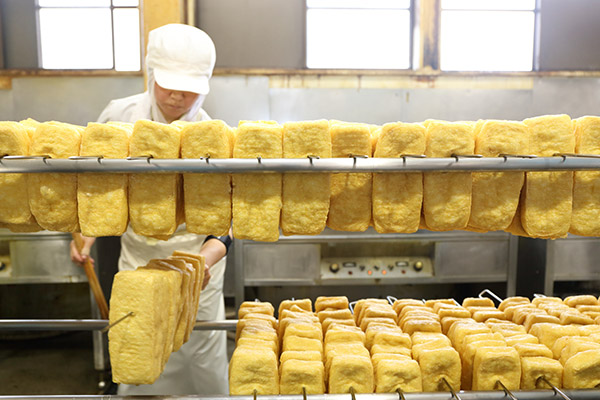
Mamesen, which consists of a workshop and a store at the foot of Mt. Sumondake, is a tofu maker and retailer who is endeavoring to pass Tochio’s deep-fried tofu to future generations. While most tofu makers use imported soybeans, Mamesen focuses on using only local soybeans from Niigata Prefecture and makes their deep-fried tofu with traditional methods.
“There is no clear definition as to what Tochio’s deep-fried tofu is but they are typically large and thick. Each one has a hole in them because we use a traditional method where, after they are deep-fried, we put them on skewers so the oil drains out. We use soymilk squeezed with the traditional fresh-squeeze method, to make a deep-fried tofu with a distinct soy flavor,” says Masaki Ohashi, the representative of Mamesen. We asked him to show us the process of making their deep-fried tofu.
Mamesen’s pride: deep-fried tofu made with soymilk squeezed in the traditional fresh-squeeze method
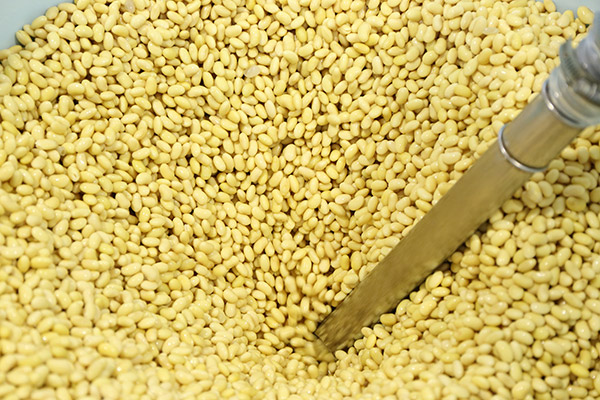
The back of Mamesen’s workshop was filled with the rich and sweet scent of soybeans and the aroma of crispy deep-fried tofu. Apparently Mamesen sometimes makes as many as 3,000 pieces of deep-fried tofu a day, and the indoor temperature during the summer can go up to 40°C.
The raw ingredient of their deep-fried tofu is Enrei soybeans, a type of soybean grown in Niigata Prefecture that is high in protein and sugar. As new soybeans are released into the market around the New Year, deep-fried tofu made in January to February are said to be the best. After soaking, the soybeans are mashed to yield soymilk. This is where Mamesen’s special fresh-squeeze method comes in.
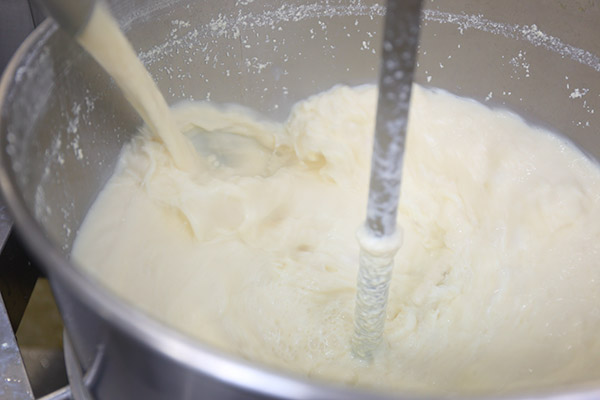
“Fresh-squeeze means separating the soymilk and the residual soybeans that come from the mash, and heating only the soymilk. Recently, most makers use the boil-and-squeeze method where they heat the soymilk and the mashed soybeans together; squeezing the soymilk out of it afterwards. But the downside of this method is that the soymilk will have the bitterness and raw, fresh taste that come from soybeans’ sprouts and skin. Our method takes more time and effort, but it is better if you want to make deep-fried tofu with a purer soybean flavor,” says Ohashi.
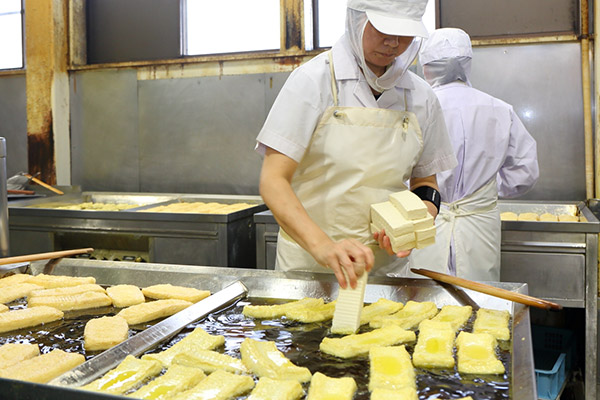
The soymilk is then mixed with minerals, solidified, and cut into thin oblong shapes. After that, the softness of each piece is checked by hand, and put through a pressing machine to carefully drain moisture out. The tofu, having become hard with its moisture fully taken out, is then deep-fried in aromatic rapeseed oil twice, till it is soft and golden brown.
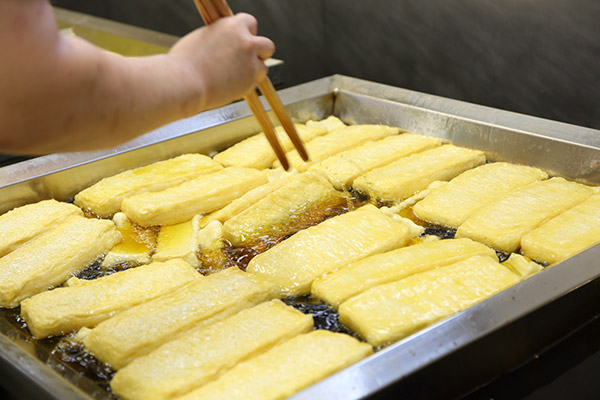
“First we fry them for about 18 minutes at a low temperature, between 110°C and 115°C, to plump them up. They’re then fried for another seven to eight minutes at a higher temperature of 170°C to make the crust crispy. If we skip any of these steps, from preparing soybeans to deep-frying, we will not get good deep-fried tofu.”
The dream of making authentic, deep-fried Tochio tofu, with soybeans grown in Tochio
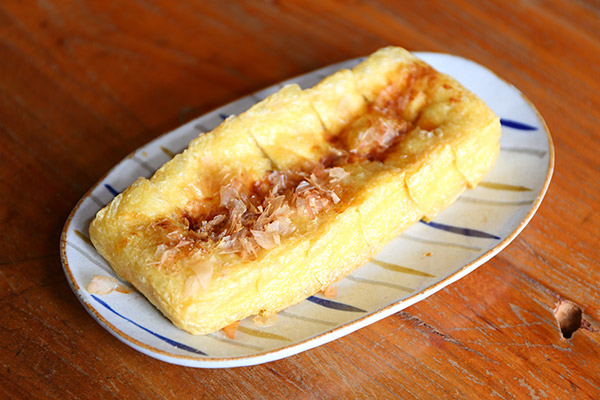
As Ohashi wishes for his customers to enjoy the best, freshest deep-fried tofu, Mamesen serves them straight out of the kitchen.
When we tasted the freshly cooked deep-fried tofu, flavored with home-made seasoned soy sauce and bonito flakes, the crust was crispy and easy to bite through, and the seasoned soy sauce that soaked the insides spread around the mouth. The soy’s rich flavor and sweetness linger on long afterwards. The depth of its taste stunned us. We encourage readers to visit Mamesen and have a taste because freshly deep-fried tofu can only be enjoyed at the shop.
Apparently Ohashi has a great ambition. He wants to make truly authentic, deep-fried Tochio tofu, not with soybeans from Niigata Prefecture, but from those grown in Tochio.
Since about four years ago, Ohashi has been cooperating with local farmers and tofu shops to revive soybean farming in Tochio. Harvest volumes are still low but he can now, on weekends and national holidays, sell deep-fried tofu made with Tochio-grown soybeans.
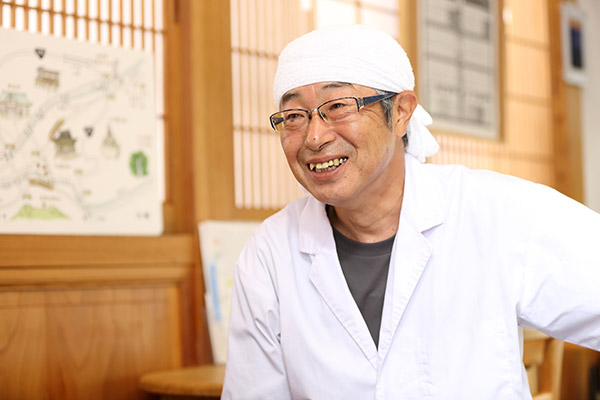
“Soybean is the ingredient that has taken root in Tochio so I would like to make my product with local soybeans. Apparently, many people think that the special deep-fried tofu, made with Tochio’s soybeans, is delectable. It may be difficult to make this dream come true while I am still alive, but one day I hope I can make all of my deep-fried tofu with Tochio’s soybeans,” says Ohashi with a smile.
Other than Mamesen, there are many other tofu stores in Tochio, both deep-fried and fresh. Together, they engage in activities to use deep-fried tofu as a flagship product to energize the region, and created a map of deep-fried tofu stores, with which visitors can enjoy different tastes from different stores.
Tochio’s famous deep-fried tofu will continue to be passed on from generation to generation by the local people, and drive the town forward.

